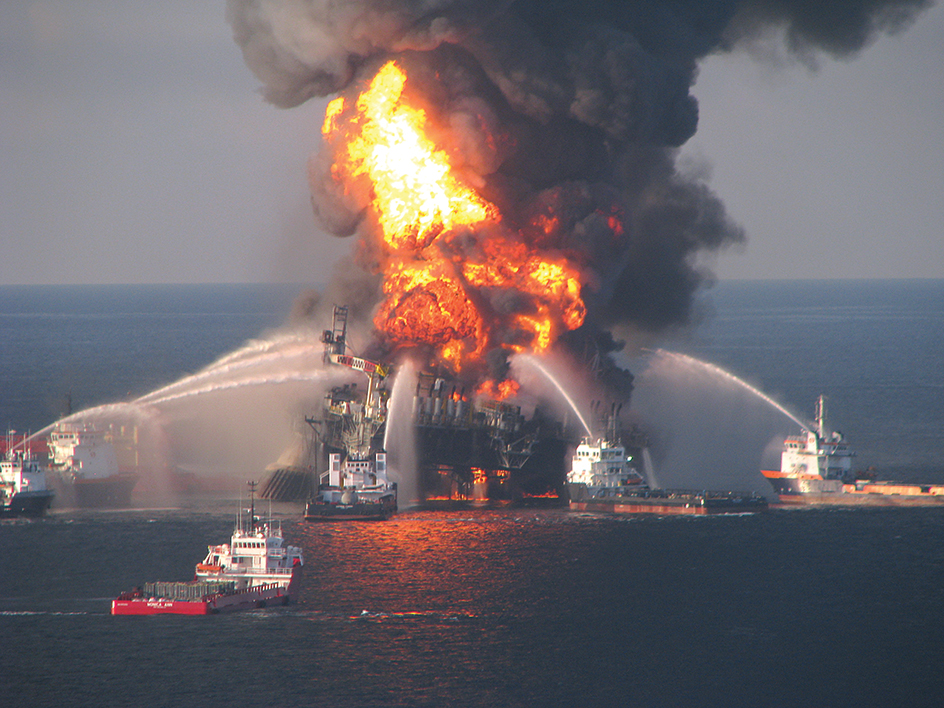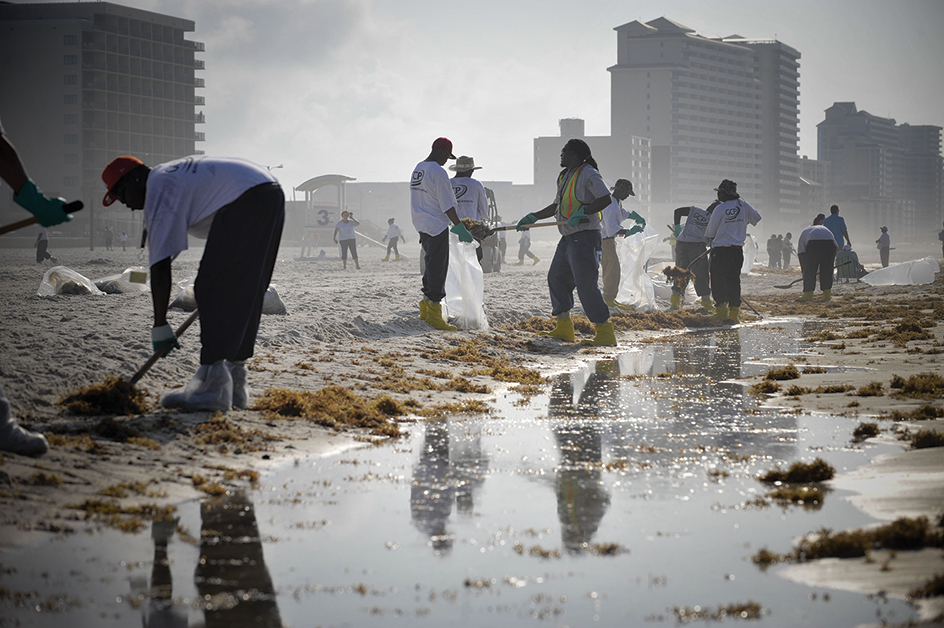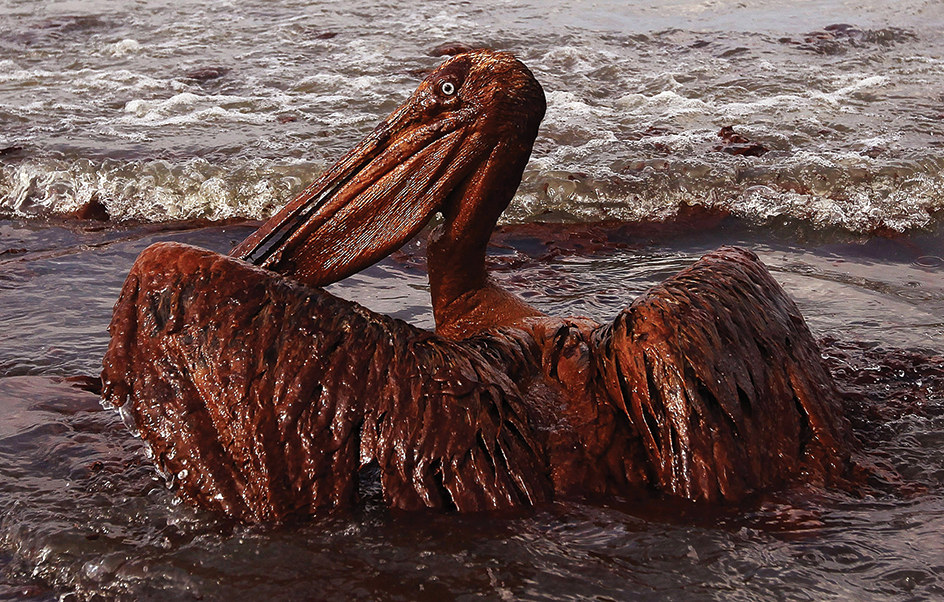Gulf oil spill of 2010 was one of the worst environmental disasters in United States history. In April 2010, there was an explosion on the Deepwater Horizon oil rig in the Gulf of Mexico, off the coast of Louisiana. The explosion killed 11 people and blew out an underwater well pipe. For nearly three months afterward, about 134 million gallons (507 million liters) of oil poured from the well into the Gulf of Mexico. BP p.l.c. , a major international oil company, was the well’s principal owner.

Prior to the explosion, Deepwater Horizon was about 50 miles (80 kilometers) off the Louisiana coast. BP had hired Transocean Ltd., the rig’s owner and operator, to drill a well beneath the gulf’s surface. On April 20, gases building up in the well pipe ignited on the rig, causing the explosion and oil spill. The rig sank two days later.

Both BP and the U.S. Coast Guard attempted a number of measures to stop the flow of oil, but the leakage continued for months. Oil coated coastal lands and harmed birds, fish, and other wildlife. The spill also devastated fisheries and tourism-based businesses along the Gulf Coast. Criticism of BP and the U.S. government increased as the crisis continued. In May, and again in July, President Barack Obama issued moratoriums (temporary bans) on new deepwater oil drilling while investigations into the spill and oil industry practices continued. The Obama administration lifted the drilling bans in October.

On July 15, BP succeeded in capping the well. On September 19, BP engineers sealed the well using a relief well. The relief well intercepted the damaged well about 2 1/2 miles (4 kilometers) beneath the sea floor. Engineers then pumped cement through the relief well, permanently sealing the damaged well.
After the well was sealed, attention focused on civil and criminal investigations into the spill. Under administration pressure, BP established a $20-billion fund to help pay victims who lost work or property due to the spill. BP funds also provided for the restoration of affected Gulf areas and reimbursement to government agencies for spill-related costs. Scientists warned that the full extent of environmental damage would not be known for years.
In 2012, BP pleaded guilty to several criminal charges, including felony counts of misconduct and obstruction of Congress. The company also agreed to a $4.5-billion settlement with the federal government. Two BP employees were charged with manslaughter, and one executive was charged with lying to authorities. In 2014, a U.S. district court judge found BP guilty of gross negligence and willful misconduct. The ruling, which found BP to be chiefly responsible for the 2010 incident, left BP liable for civil penalties under the Clean Water Act. A federal judge ruled in 2015 that BP was responsible for 134 million gallons (507 million liters) of oil released into the gulf. The judge also said that BP had captured an additional 34 million gallons (130 million liters) that spewed from the well before the oil could pollute gulf waters.
In 2016, a federal judge approved a $20.8-billion agreement settling government lawsuits filed against BP and the rig’s operators. The settlement funded multiple efforts to improve wildlife habitat and water quality and restore coastal communities in five Gulf states.

